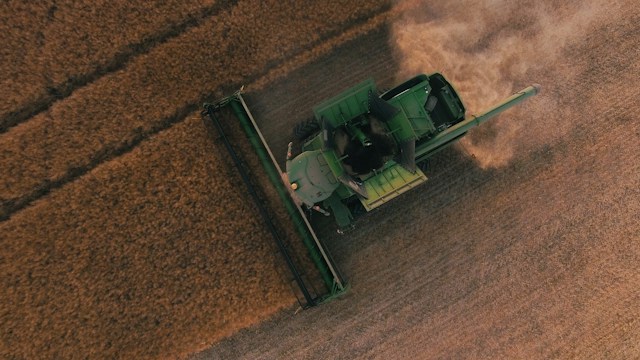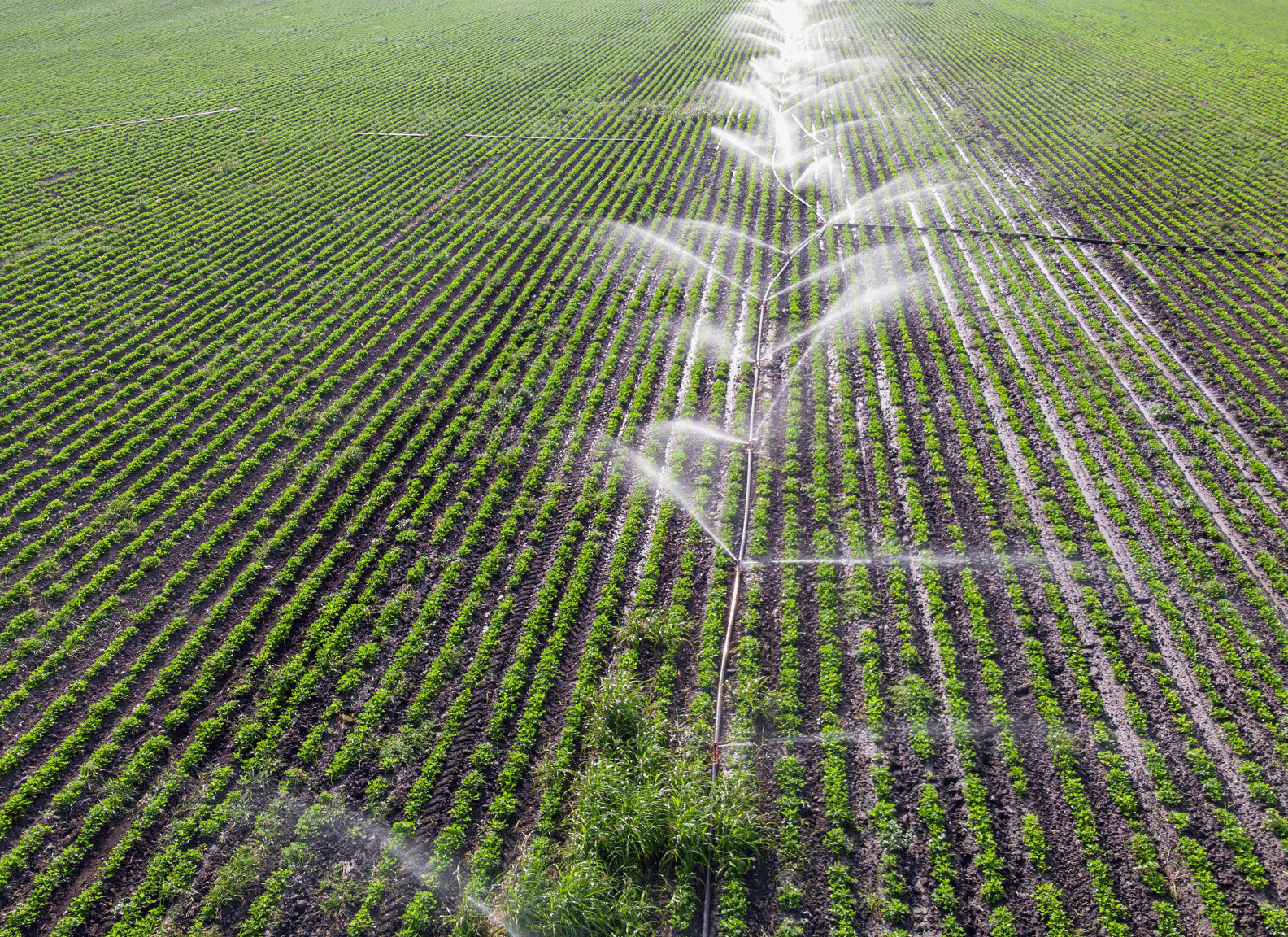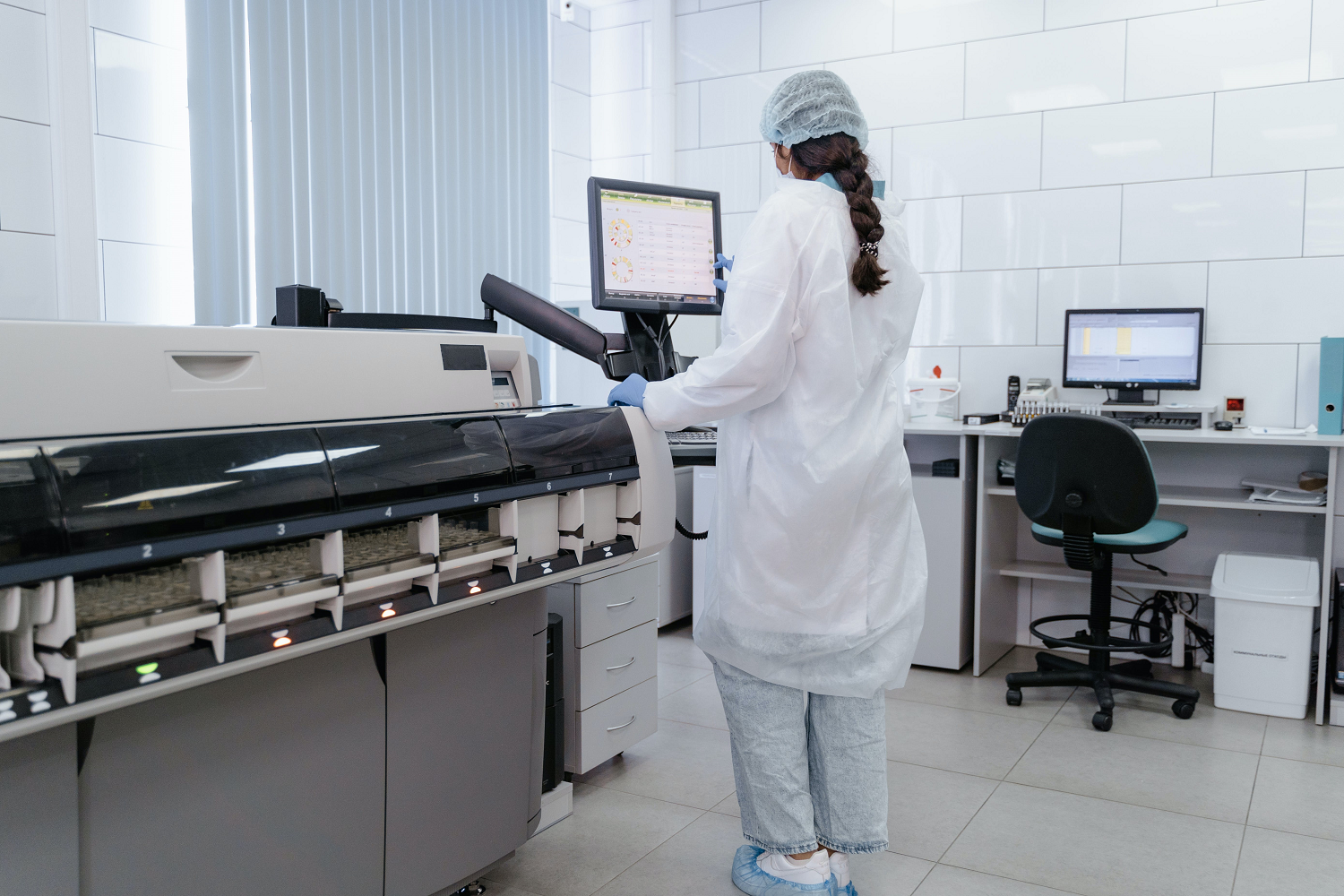In recent years, several revolutionary advancements have transformed the sector of agricultural technology, significantly impacting the domain of produce farming.
From artificial intelligence intervention to advanced irrigation systems, these innovations have taken the farming industry by storm, enabling farmers to optimize produce quality and quantity.
Despite the challenges the agricultural sector faces, technology has emerged as a potent solution, enhancing yield rates and sustainability.
This blog discusses some of the most influential innovations currently shaping produce farming.
It aims to elucidate how technology is reshaping the agricultural landscape and subsequent consequences for farmers, businesses, and consumers alike.
Thereby, shedding light on the necessity for continued technological progress in the pursuit of more efficient and productive farming practices.
Contents
- Breakthrough Technologies In Produce Farming
- 1. Automated Robotic Harvesting
- 2. Vertical Hydroponic Systems
- 3. Precision Agriculture Drones
- 4. Gene Editing Crop Techniques
- 5. IoT in Farming Operations
- 6. AI-enhanced Crop Analysis
- 7. Climate Controlled Greenhouses
- 8. Solar Powered Irrigation Systems
- 9. Real-time Soil Health Monitoring
- 10. Farm Management Software Systems
- The Bottom Line
Breakthrough Technologies In Produce Farming
1. Automated Robotic Harvesting
One of the most revolutionary advancements in the field of agriculture is the advent of automated robotic harvesting.
This novel concept entails the harnessing of highly sophisticated robotic technology to optimize the process of harvesting crops.
Driven by a combination of cutting edge technology and adaptive machine learning algorithms, these rovers show remarkable adeptness at performing complex farming tasks that were traditionally seen as uniquely human.
From delicate fruit-picking to grain harvesting, there’s hardly any agricultural task that these machines can’t undertake with considerable precision.
Robotic harvesters, using their advanced computer vision systems, are able to identify ripe crops and delicately pick them without causing any damage.
Not only does this enhance the quality of the harvested produce, but it also enables farmers to maintain a consistent harvest irrespective of labor instability or weather conditions.
This innovative mechanization of farming is anticipated to significantly alleviate the growing labor shortage issue that dominaes the agricultural industry globally.
By eliminating the need for manual labor during harvesting, automated robotic harvesting can minimize the adverse health effects associated with prolonged manual work.
The beauty of these machines lies in their ability to work continuously without any breaks, which contributes to a remarkable increase in productivity.
Furthermore, they can be programmed to perform the task in any given pattern, thereby maximizing the efficiency of the harvesting process.
However, the adoption of automated robotic harvesting is not without its challenges.
One of the major drawbacks is the hefty capital investment required for the purchase and maintenance of these machines.
Nonetheless, considering the marked improvement in yield quality and quantity, many farmers see this as a worthwhile investment.
The potential for robot harvesters to revolutionize traditional farming practices cannot be overstated.
With the continuous advancements in the field of robotics and artificial intelligence, we can expect to see more innovative solutions that further optimize farming operations.
Indeed, this bold integration of technology with farming is a clear testament to the transformative power of innovation, thus positioning automated robotic harvesting as a pivotal player in the future of agriculture.
2. Vertical Hydroponic Systems
One of the most promising breakthroughs in the field of produce farming is the application of Vertical Hydroponic Systems.
These systems, characterized by stacks of plant beds arranged vertically, provide an efficient and effective method of crop cultivation.
It’s a novel concept that capitalizes on vertical space, allowing farmers to grow crops in small, urban areas where space might be limited.
Compared to traditional farming methods, vertical hydroponics consumes less water and produces significantly higher crop yields.
This approach uses a variety of different hydroponic techniques such as nutrient film technique (NFT), deep water culture (DWC), and aeroponics.
In contrast to soil-based agriculture, these hydroponic solutions feed nutrients directly to the root system, optimizing plant growth and reducing waste.
Vertical Hydroponic Systems, utilizing vertical space, efficient resource management, and precision technology, are revolutionizing the produce farming industry.
The plants in vertical hydroponic systems are often housed in controlled environment agriculture facilities (CEA), which provide optimal growing conditions year-round.
This level of control over the growing environment allows for the production of high-quality, consistent crops irrespective of external weather conditions.
Moreover, the absence of soil in these systems eliminates the risk of soil-borne diseases and pests, reducing the reliance on harmful pesticides.
Another major advantage is the reduction of agricultural runoff and the potential for related environmental damage.
Due to the closed-loop nature of these systems, nutrients are recycled rather than lost, contributing to lower nutrient pollution levels.
The combination of these factors makes vertical hydroponics a sustainable and cost-efficient farming method.
Moreover, the scalability of these systems allows for their application in a variety of settings from urban rooftops to large greenhouse structures, offering a potential solution to urban food security issues.
Vertical Hydroponic Systems, with their unique combination of advanced technology and conservation practices, are indeed one of the major breakthroughs in the produce farming industry.
The continuous development and adaptation of this technology promises a future of sustainable and impactful farming practices, particularly in urban environments where space and resources are at a premium.
3. Precision Agriculture Drones
One of the most exciting breakthrough technologies currently being utilized in produce farming is the use of precision agriculture drones.
These drones, equipped with advanced sensors and imaging capabilities, are transforming the way farmers monitor their crops and manage their operations.
Agricultural drones can be flown over large areas of land quickly, collecting real-time data about the state of the crops.
This data can then be analyzed to reveal crucial information about the health of the plants, the moisture levels in the soil, and even the presence of pests or diseases.
The ability to collect and analyze data on such a detailed and comprehensive scale, in real time, is a true game-changer for the agricultural industry.The use of drones for precision agriculture can lead to better decision making in farming, resulting in higher crop yields, improved quality, and increased farm profitability.
This is because the data obtained from drones allows farmers to identify issues early, before they escalate into bigger problems, and to apply targeted solutions.
For instance, if a part of a field is too dry, farmers can adjust irrigation specifically in that area, thereby conserving water and ensuring the health of the crops.
Similarly, if the drone’s sensors detect a disease in one part of the field, farmers can apply pesticides or fungicides only where needed, reducing costs and minimizing environmental impact.
Farmers can also use the data from precision agriculture drones to optimize their crop rotation strategies, fertilization schedules, and harvest timings, all of which can influence productivity and profitability.
The drones can also be used to create accurate 3D maps of the terrain, which can help in planning efficient planting patterns and site-specific crop management.
Furthermore, the time and labor-saving potential of agricultural drones is enormous, as these devices can cover huge areas of land far more quickly and thoroughly than human workers could.
Despite the benefits, the widespread adoption of precision agriculture drones in farming is not without challenges.
There are concerns over the initial purchase and maintenance costs of drones, as well as issues of privacy, safety, and regulation associated with drone usage.
However, as drone technology advances and becomes more affordable, and as regulatory frameworks catch up, it seems likely that the use of precision agriculture drones will continue to increase, revolutionizing the world of produce farming.
4. Gene Editing Crop Techniques
Among the remarkable technological advances in the field of agriculture, gene editing crop techniques take a premier position.
These cutting-edge biotechnological methods are fundamentally changing the way we cultivate and develop our food.
Unlike traditional breeding methods, gene editing allows scientists to make precise changes to the DNA of the crops.
This revolutionary technique has the potential to maximize crop yields, improve nutritional content, and enhance resistance to diseases and extreme weather conditions.
One of the most widely used gene editing techniques in agriculture is CRISPR technology (Clustered Regularly Interspaced Short Palindromic Repeats).
Through use of precise molecular tools, CRISPR enables alterations in specific gene sequences without introducing foreign DNA.
Which means, crops developed using this technique are not considered as genetically modified organisms (GMOs) and are more acceptable to the public and regulatory bodies.
Besides CRISPR, there are other gene editing techniques like TALENs (Transcription Activator-Like Effector Nucleases) and ZFNs (Zinc Finger Nucleases) that are also gaining prominence.
These gene editing technologies are fostering the creation of ‘super crops’ that can withstand the challenges posed by climate change and increasing global food demand.
A striking example is the development of ‘flood-tolerant’ rice, called ‘Scuba rice’, achieved through gene editing, which can withstand nearly two weeks of flooding.
Apart from enhancing crop resilience, gene editing can also contribute to nutrition enhancement in crops.
For instance, scientists have successfully enriched the Beta-Carotene content in rice, which can contribute to combating Vitamin A deficiency in developing countries.
Furthermore, gene editing can assist in reducing allergenicity of certain crops, opening up new dietary possibilities for allergy sufferers.
While this technology holds promise, it is crucial to note that it also raises ethical and regulatory considerations.
If used responsibly, gene-edited crops can pave the path towards sustainable and resilient agriculture in the 21st century.
5. IoT in Farming Operations
The incorporation of the Internet of Things (IoT) in farming operations can be considered as one of the significant breakthrough technologies in the field of produce farming.
Under conventional farming methods, farming operations were time-consuming and require much manpower, but with the introduction of IoT, this has drastically changed.
With IoT, farmers are now able to monitor their farms and make necessary adjustments in real-time from anywhere in the world through their smart devices.
This revolutionary technology can be seen as the initiation of a new farming era, where farming operations are carried out more effectively, more conveniently, and with reduced waste and cost.
Farmers can use IoT to monitor the condition of their crops such as their health, temperature, and the presence of pests.
This real-time monitoring makes it easier for them to take the necessary action to solve the problem immediately, thus, preventing any potential loss.
Moreover, IoT has made farming more sustainable as it allows for the efficient use of resources.
Farmers can use IoT sensors to monitor the weather conditions and soil health and make necessary adjustments, avoiding soil degradation and unnecessary use of fertilizers.
IoT also provides valuable data that can be analyzed to improve yield, provide early warnings for crop diseases, and give predictive insights for decision-making.
Real-time information from multiple sources, such as weather forecasts and market trends, can be integrated to allow farmers to make informed decisions about when to plant, when to harvest, and when to sell.
Many farming operations have also become automated with the use of IoT, including irrigation, feeding of animals, and seeding.
These automated systems not only makes the farming process more straightforward, they are also able to perform these tasks more efficiently and accurately.
In addition, IoT in farming operations has played a significant role in improving the quality of food.
With real-time monitoring and data analysis, farmers can ensure that the crops are in their optimal condition, hence producing higher quality produce.
Moreover, with traceability features, consumers can track the origin of their food, providing transparency and trust in the food supply chain.
Therefore, the incorporation of IoT in farming operations opens up a realm of possibilities for efficient, sustainable, and quality driven agriculture.
This significant breakthrough technology has not only transformed how farming is carried out, but it also carries the potential of reshaping the future of produce farming worldwide.
6. AI-enhanced Crop Analysis
The world of produce farming is experiencing significant advancements due to the integration of Artificial Intelligence (AI) in crop analysis.
One key application is the utilization of AI for disease and pest detection.
AI-based systems can identify patterns and anomalies in crops that are not visible to the naked eye, thus facilitating early incident detection.
This early detection of crop diseases and pests can drastically save farmers from potentially significant yield losses.
Another benefit of AI-enhanced crop analysis is its capacity to monitor the crop’s growth patterns and nutritional needs in real time.
Through advanced algorithms, these systems can continuously analyze a crop’s development and provide precise information on its requirements for optimal growth.
This allows farmers to avoid over or under-fertilization and consistently deliver the necessary nutrients to the crops, leading to healthier plants and increased yield.
Further, the use of AI technologies in irrigation can also result in significant water conservation by intelligently predicting the water needs of crops based on weather patterns and soil conditions.
Besides disease detection and nutritional management, AI systems can also help improve harvest optimization by analyzing crop readiness for harvesting.
These systems can accurately predict the best time to harvest, ensuring that the crops are picked at the peak of their ripeness for better quality and larger profits.
By automating the harvest readiness decision process, farmers can save time and reduce wastage, leading to increased efficiency in the farming operations.
The combination of AI with other technologies like IoT and drones can also lead to the development of autonomous farming systems, which can significantly reduce human labor and increase farming efficiency.
However, the implementation of AI in farming also poses some challenges like the high cost of equipment and the need for advanced technical skills, which can be a barrier for small and medium-sized farmers.
Nevertheless, the potential benefits of AI-enhanced crop analysis are tremendous and can revolutionize the entire produce farming industry by improving crop quality and yield while reducing environmental impacts.
As AI technologies continue to advance and become more accessible, they will play a crucial role in the future of produce farming and food security.
Overall, AI-enhanced crop analysis represents a major breakthrough in the world of produce farming, bringing countless benefits and possibilities in improving crop production and management.
7. Climate Controlled Greenhouses
Climate Controlled Greenhouses are a revolutionary development in the field of modern produce farming.
These greenhouses utilize cutting-edge technologies to automatically regulate the environment inside the greenhouse, optimizing conditions for plant growth.
They can precisely control factors such as temperature, humidity, light levels, and carbon dioxide concentration, which are vital for plant health and productivity.
More traditional greenhouses required manual adjustments and were far less precise, making them less efficient and reliable for optimal plant growth.
With climate-controlled greenhouses, farmers can now access real-time data and make necessary adjustments remotely, allowing crops to grow in the exact conditions they need without the farmer being physically present all the time.
This technology has not only increased crop yields significantly, but also helped ensure the consistent quality of the produce.
Moreover, these structures are designed to be energy-efficient, reducing operational costs and increasing sustainability in the long term.
The use of automated systems also reduces labour costs and the potential for human error.
Regardless of the weather conditions outside, plants within these highly advanced greenhouses can grow year-round, providing stable production and income for farmers.
With increased control over the growing environment, farmers can even experiment with different crop types, extending their range of produce beyond the typical harvest seasons.
Climate controlled greenhouses can, therefore, make it possible for farmers in unsuitable climates to grow crops that would typically not thrive in their region.
Moreover, these high-tech greenhouses can incorporate other innovative technologies such as vertical farming and hydroponics, thus becoming a hub for advanced agricultural techniques.
Overall, the integration of climate-controlled greenhouses into produce farming operations is a game-changing development, offering increased productivity, sustainability, and flexibility.
Furthermore, it also paves the way for the integration of other advanced technologies such as AI and IoT into the field of agriculture.
As research progresses, it is expected that even more sophisticated and efficient systems will be developed, further revolutionizing produce farming through climate controlled greenhouses.
8. Solar Powered Irrigation Systems
As we progressively embrace clean energy solutions, one of the significant breakthroughs in produce farming is the implementation of solar powered irrigation systems.
At their core, these systems are designed to leverage energy from the sun to pump water, providing an eco-friendly and cost-effective solution to traditional energy grids and diesel-powered pumps.
Primarily located in sun-rich agricultural areas, these systems can significantly reduce the carbon footprint associated with farming operations.
The main advantage lies in their capacity to function without the necessity for external electricity or fuel sources.
This technological innovation provides another layer of sustainability to the agricultural industry, as it contributes to reducing greenhouse gas emissions and reliance on non-renewable energy.
One of the subsets of these systems includes drip irrigation incorporated with solar power, which ensures precise water delivery whilst conserving water resources.
Within the context of climate change and increasing water scarcity, the advent of solar-powered irrigation systems is a revolutionary step towards sustainable and efficient produce farming.
Their adoption entails multiple benefits such as increased crop yield due to optimal watering, and enhanced return on investment due to reduced fuel and maintenance costs.
A typical solar powered irrigation system comprises solar panels, a pump, and a water storage system, all working in unison to provide a continuous supply of water.
It is important to note, however, that the effectiveness of these systems is dependent on appropriate sizing, design, and management.
Despite the initial upfront costs being higher than traditional irrigation systems, the long-term economic benefits substantially outweigh these costs since the system is significantly cheaper to run and maintain.
Ideally, as more research and development focus is given to maximising the efficiency and durability of solar technology, we can expect the costs to further decrease, thereby increasing the accessibility and affordability of these systems for farmers around the globe.
Moreover, with governments worldwide incentivising the transition towards renewable energy sources, solar-powered irrigation systems could very well become the standard in modern farming.
Overall, the introduction of solar powered irrigation systems in produce farming embodies the growing trend of agricultural practices becoming more resource-efficient and environmentally sustainable.
9. Real-time Soil Health Monitoring
Given the critical importance of soil health to produce farming, the increasingly widespread adoption of Real-time Soil Health Monitoring technology is a commendable revolution in the field.
The system entails the use of sensors embedded in agricultural land to record key data points related to soil quality in real-time.
This precise monitoring of the soil environment and its constituent elements allows farmers to make data-driven decisions about nutrient uses, watering schedules, and other farm management strategies.
The ability to continually monitor soil health in real-time and respond to emerging trends almost immediately can significantly improve crop yields and sustainability efforts.
One of the notable aspects of this technology is the ability to detect potential diseases and infestations before they become significant, enabling preventative action and thus minimizing the risk of catastrophic crop failure.
The sensors can measure valuable indicators such as soil temperature, moisture levels, pH, and various nutrient densities, providing a detailed picture of soil health that goes beyond traditional methods.
Utilizing this information, software models can predict how the soil composition might evolve under different conditions and help farmers adjust their practices in response to those predictions.
Real-time soil health monitoring systems can integrate with other technological advancements like Automated Robotic Harvesting and Precision Agriculture Drones, to create a comprehensive and automated farming technology ecosystem.
This integration allows for the balanced maximization of both soil health and crop yields, contributing positively to the overall farm efficiency.
Speaking of impacting a broader rural economy, this technology can also help optimize resource use, reduce waste, and decrease environmental impacts, leading to more sustainable farming operations.
This system’s value is especially profound in areas prone to extreme weather events and climate change effects, as it can help farmers adapt their practices to changing soil conditions in a timely manner.
As an emerging technology, real-time soil health monitoring systems are still evolving, and as they improve, so should their ability to contribute positively to produce farming operations.
Despite the initial financial investment required to implement this high-tech system, the potential return on investment from improved crop yields and efficiency can be substantial.
The agricultural sector, by constantly adopting these kinds of innovative technologies, is poised to overcome a plethora of challenges, transforming traditional farming into a high-tech, sustainable, and highly profitable industry.
Real-time Soil Health Monitoring is such a breakthrough and necessary determinant of success in the modern agricultural sector, particularly in the realm of produce farming.
10. Farm Management Software Systems
As produce farming continues to adapt in the modern technological age, the utilization of Farm Management Software Systems has become increasingly critical.
Farm Management Software Systems, also known as FMSS, are designed to streamline the myriad of tasks associated with farming.
These systems serve as a digital hub, allowing farmers to manage, plan, and track all aspects of their operations, from seed to harvest.
Such systems are designed to increase productivity and efficiency, reduce waste, and enhance the overall profitability of the farming business.
One of the main advantages of Farm Management Software Systems is their ability to handle both the macro and micro layers of a farming operation.
On the macro level, these systems can assist with the planning of planting schedules and rotations, while monitoring overall yield and profitability.
On the micro level, FMSS can help manage the specifics of individual crop health, irrigation needs, and pest control.
Additionally, modern FMSS have the capability of utilizing modern technologies like AI and IoT for more accurate data collection and analysis.
For instance, they can sync with devices that monitor soil health or weather conditions, automating data gathering that used to be time-consuming and potentially inaccurate.
Moreover, Farm Management Software Systems offer Real-time data analysis, enabling farmers to make immediate changes and decisions based on accurate and up-to-date information.
Such immediacy of data empowers farmers to react swiftly to potential issues, significantly reducing losses and improving crop outcomes.
The capacity to adapt swiftly based on real-time data can ultimately make or break a farming operation, indicating the significance of FMSS.
Furthermore, these systems can also assist with the financial and administrative sides of farming.
Many FMSS solutions provide features for stock management, payroll, record keeping, and even regulatory compliance documentation.
All these factors contribute to why farm management software have become a necessity for modern day farming operations. The ability to streamline tasks, make informed decisions based on real-time data, and manage financial aspects are just some of the reasons why more farmers are integrating this technology into their practices.
As farming technology continues to evolve and improve, the role of farm management software systems is expected to become even more vital.
The Bottom Line
The future of agriculture lies in the realm of technology, clearly evident through advancements such as automated robotic harvesting, vertical hydroponic systems, and precision agriculture drones.
Genetic editing techniques and AI-enhanced crop analysis are set to revolutionize crop growth and production, while IoT brings unprecedented efficiency to farming operations.
Furthermore, climate-controlled greenhouses and solar-powered irrigation systems opt for sustainable and resourceful practices.
In addition, real-time soil health monitoring and farm management software systems offer valuable insights for decision-making and strategy optimization.
As such, embracing these technologies is crucial for the agricultural industry’s growth and sustainability.




